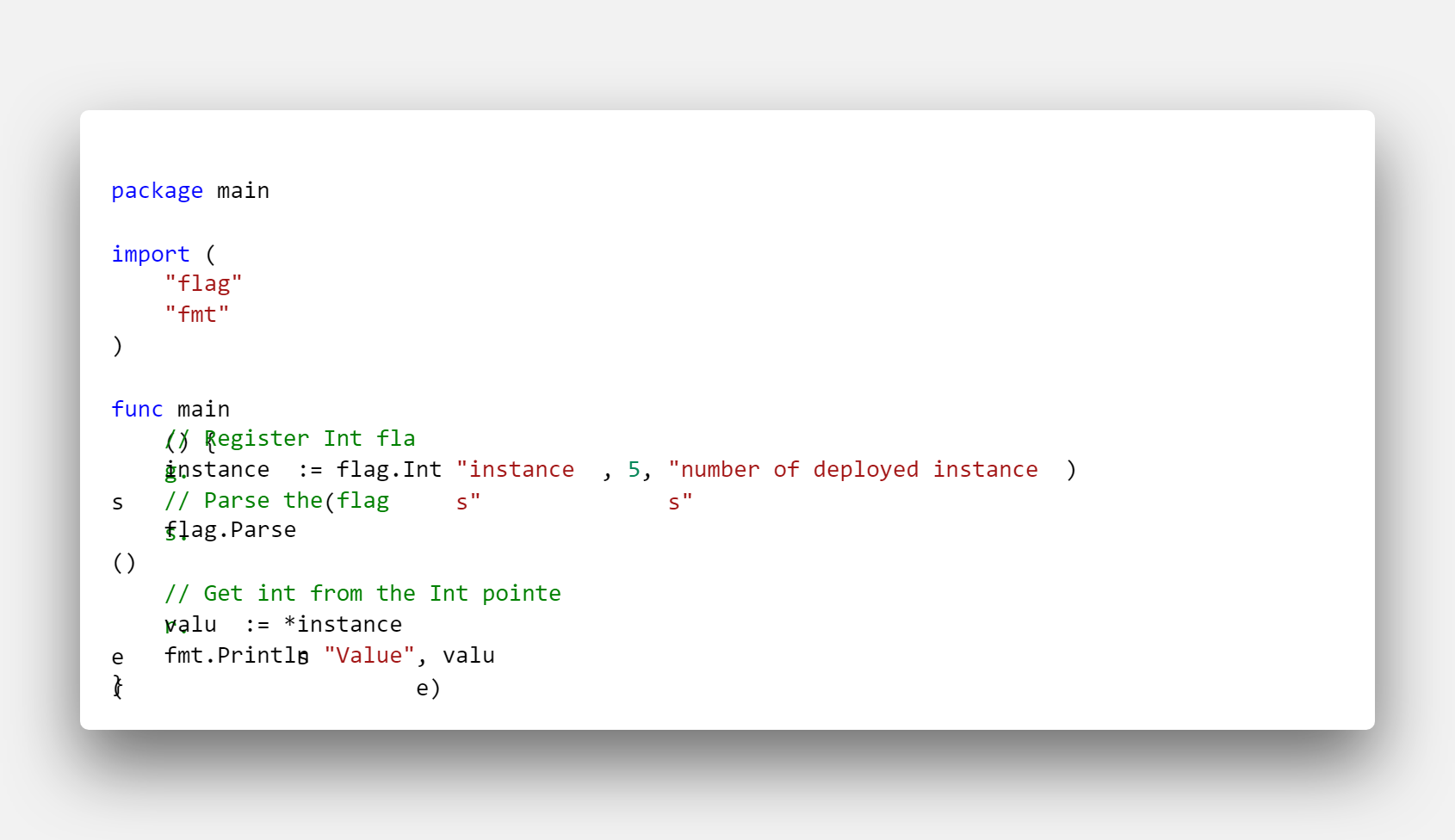Command-line flags are a common way to specify options for command-line exercutables or programs.
Go provides a flag package supporting basic command-line flag parsing.
Flags are defined using flag.String(), Bool(), Int(), etc. Depending on the intended datatype.
First argument — Flag name
Second argument — Default value
Third argument — help message for flag nameinstances := flag.Int(“instances”, 5, “number of deployed instance”)
After all flags are defined, call
to parse the command line into the defined flags.
Command line flag syntax
The following forms are permitted:
-flag
-flag=x
-flag x // non-boolean flags only

$ go build flags.go
./flag -h
-instances int
number of deployed instances (default 5)
$ ./flags -instances 7


Top comments (0)